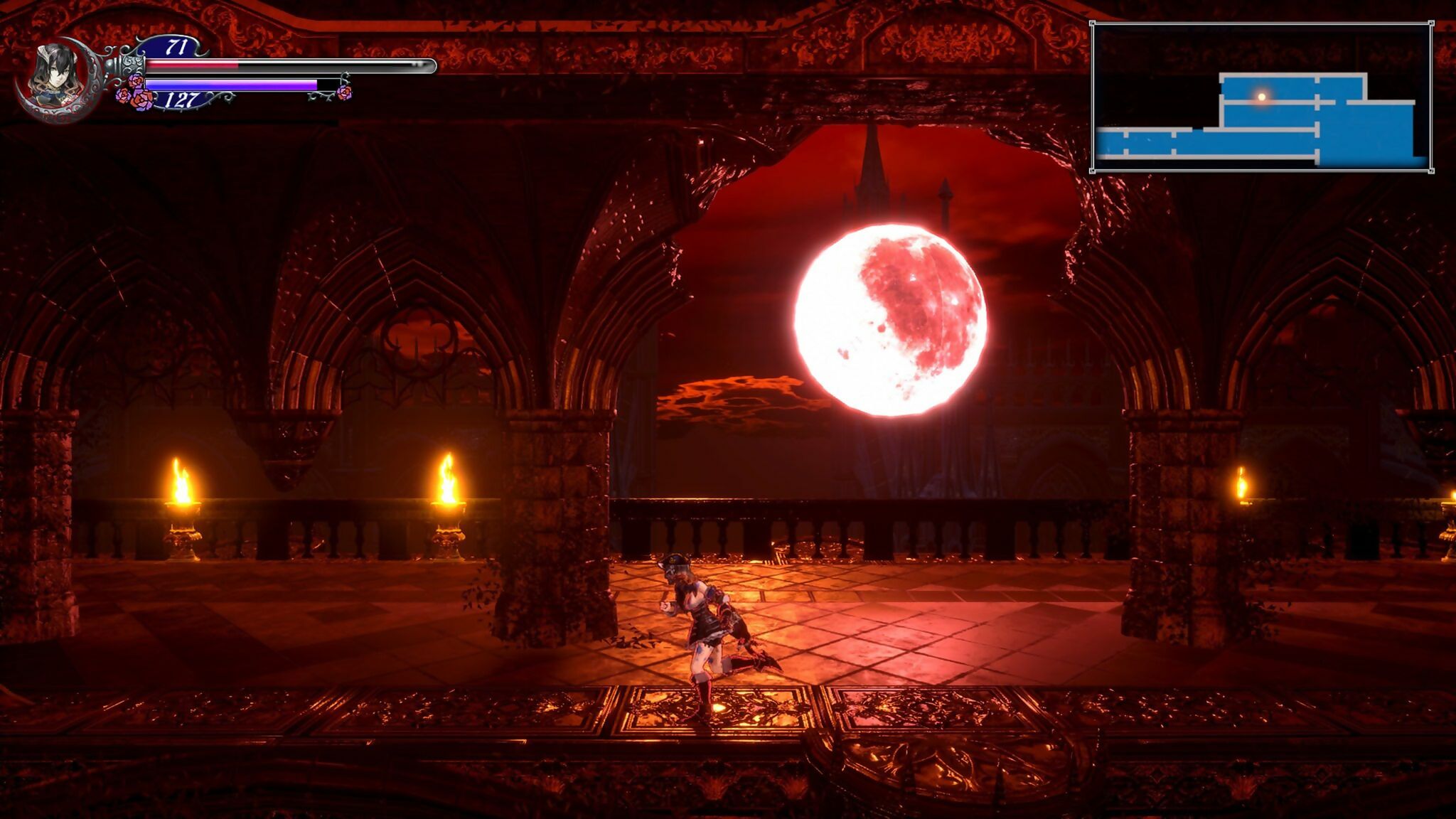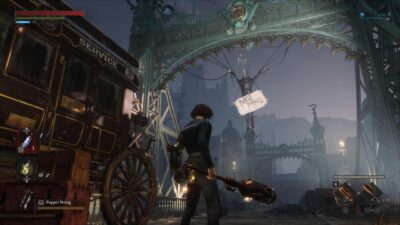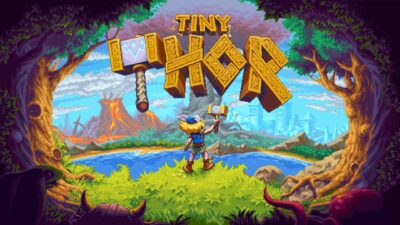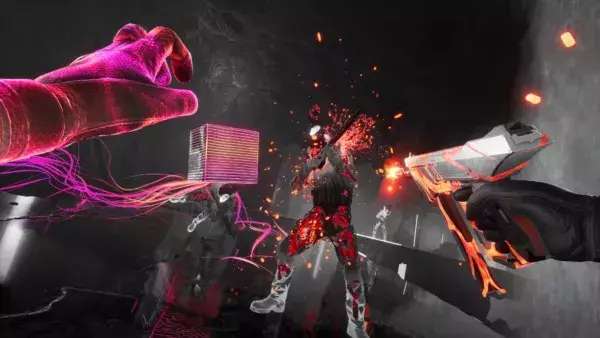
A Castlevania game in all but name, and that’s no bad thing. Here’s our review of Bloodstained: Ritual of the Night…
Bloodstained: Ritual of the Night is a Castlevania game in all but name, and even then the subtitle isn’t too far off. This is all by design, of course; Koji Igarashi, the former lead producer of the Castlevania series, left Konami around five years ago to found his own studio and give fans (read: Kickstarter backers) exactly what they want: a spiritual successor to the seminal Symphony of the Night.
Igarashi and his team at ArtPlay have succeeded in their goal, crafting a brand new Igavania that bottles the essence of those classic side-scrolling, monster-slaying adventures, for both good and bad.
Let’s start with the good, then. It’s not an understatement when I say Bloodstained is essentially a new Castlevania game. There are some obvious elements that jump out straight away, even if you’ve only ever had a passing interest in the series. The gothic castle is a Castlevania staple, its opulent interior decorated with stained glass windows and enormous chandeliers, where each section of the castle is bathed in the luminous glow of a blood-red moon that dominates the night sky.
The castle’s a labyrinthine sprawl of corridors, multi-layered rooms, and hidden paths containing secret treasures. Some of Bloodstained’s familiar elements go deeper than these surface level details, though. The enemy designs are an eccentric mix, with a traditional sword-wielding knight found in the same room as a giant spell-casting house cat with horns.
But there are also clear analogues to enemies from Igarashi’s Castlevania games, such as the undead creatures that rise from the ground, grotesque monsters that hurl projectiles into the air, and big armoured guys that heave spinning axes. They might look different, but their behaviour is pulled straight from the Belmont archives.
Those well-versed in the inner workings of the Castlevania series will clearly get a kick out of these well-trodden ingredients, and that’s without mentioning the way you can attack right before your initial strike lands to get in a fast second attack – a trick for those who still maintain the muscle memory 20 years on. Despite this, Bloodstained is still welcoming to newcomers.
On the default normal difficulty, combat is a relative breeze until a sudden difficulty spike towards the story’s conclusion, and by that point you’ll hopefully have a decent handle on the game’s intricacies. Combat is built around a few different mechanics. Its foundations are composed of either melee or ranged attacks, depending on your weapon of choice, with daggers, rapiers, greatswords, spears, whips, a blunderbuss, and many more to choose from. Each weapon type has its own attack range, but you never feel trapped in any canned animations.
Combat is responsive and satisfying, as agile weapons hit with a rapid pace that relies on movement, while their heavier counterparts let you tear enemies asunder with hefty blows. There’s also a backdash for dodging out of harm’s way, and both jumping and ducking are still viable defensive manoeuvres.
The crown jewel of Bloodstained’s combat is, however, the variety of otherworldly shards that allow you to personalise your combat style. Each enemy you kill has a chance to drop one of these shards, letting you inherit one of the recently deceased’s powers. Bosses tend to drop shards imperative to progression, whether it’s a double jump for reaching higher levels, or a reflector beam that gives you access to previously inaccessible areas.
But most of the shards you assemble grant you the use of projectiles, special attacks, summons, or passive buffs – each one sipping from a pool of mana. There are a plethora of varied shards to play around with, whether you want to shoot beams of lightning out of your hands, or conjure a gaggle of tentacles to deal damage to anything in range.
You can ostensibly pick a handful of shards for specific situations, perhaps deploying a magic shield to err on the defensive side. But enemy attack patterns and move sets are so simple that there’s never any real incentive to alter your selection of shards to fit a given situation. Instead, it’s much more about experimenting with myriad setups and finding what works for you.
Shards are one of the few innovations Bloodstained introduces to its Igavania framework. Other attempts at contemporary ideas are less successful, with side quests that are little more than grindy monster hunts, and a crafting system that’s mostly inconsequential. Other issues arise simply because of Bloodstained’s adherence to the past, and these dated decisions are only exacerbated by a disappointing slew of bugs and glitches.
At one point, I was wandering the castle for upwards of an hour due to unknowingly missing a line of dialogue that didn’t trigger because I did things in the ‘wrong’ order. The game is also full of opaque puzzle design, perhaps requiring you to open a chest you didn’t know existed in an area you last visited five hours ago, wherein you’ll find a piece of armour that will allow you to gain access to another area you had completely forgotten about. Exploration is an integral part of any Igavania, but retreading old ground because of purposefully vague puzzle design isn’t fun.
There’s been no shortage of Metroidvanias in recent years, with games like Hollow Knight and Ori and the Blind Forest innovating on the genre in interesting ways. Bloodstained is much more of a throwback to the past; it has some new ideas but otherwise feels overly familiar. Everything’s all a bit been-here-done-that, yet there’s no denying ArtPlay succeeded in creating exactly what it said it was going to. Bloodstained has its problems, but there’s still a sense of comfort in that familiarity.
Highlight
The sprawling castle at the heart of Bloodstained is a treat to explore. There’s a delightful flow to its mixture of combat and exploration, and the bowels of the castle throw up some curious surprises. Progressing can be frustratingly esoteric at times, but there’s no doubting the gratification of opening up new areas.
Verdict: 74%
A familiar but enjoyable throwback to Koji Igarashi’s Castlevania games of old.
Genre: Igavania
Format: PS4 (tested) / XBO / Switch / PC
Developer: ArtPlay
Publisher: 505 Games
Price: £34.99
Release: Out now





